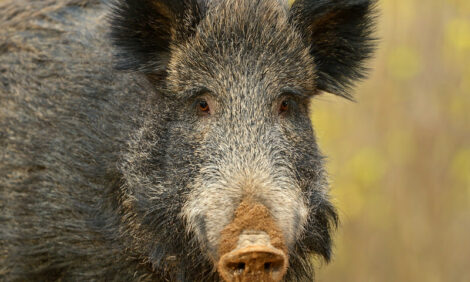



Weekly Overview: PED, Hogs & Pigs and the Importance of Biosecurity
GLOBAL - Porcine Epidemic Diarrhoea (PED) presents a whole new range of challenges to the US pig sector when it comes to forecasts for pork production and prices; this was clear from the quarterly 'Hogs & Pigs' report, published last week and the commentary upon it. Canada has reported its first PED outbreak for some weeks. Vets and farmers in the UK explored biosecurity as a vital way to keep PED and African swine fever off the country's farms at a workshop last week.The regular weekly update on the Porcine Epidemic Diarrhoea (PED) situation from the authorities in the United States is not available but the disease has received a good deal of attention in comments on the latest USDA Quarterly Hogs & Pigs report, which was published late last week.
In summary, on 1 September, the US inventory of all hogs and pigs was down two per cent from a year ago, while sow numbers are up two per cent. There were three per cent fewer market hogs than 12 months previously but seven per cent more than last quarter.
The June-August 2014 pig crop too was one per cent lower than 2013. The average pigs saved per litter was 10.16 for the June-August period compared to 10.33 last year.
During a teleconference about the report hosted by the US National Pork Board, industry analyst cast doubt about the very positive prospects in the report. The as-yet unknown effect of PED virus this winter is worrying the industry.
Dr Ron Plain of the University of Missouri pointed out the very optimistic farrowing intentions for the fall and winter in the USDA report. Those numbers – four per cent growth in the fall and three per cent growth in the winter – appear to ignore the threat of PED, he said. However, he thinks the disease will cause fewer losses in the coming months than last year although pig prices are likely to fall.
Daniel Bluntzer, Director of Research for Frontier Risk Management in Texas, said the industry could take two years to get back to pre-PED levels. He expects volatility in prices ahead.
Ontario-based livestock and meat market analyst, Kevin Grier, commented that PED had little impact on the Canadian market, where the focus is on finding alternative destinations for pig meat exports following the Russia ban. He too agreed the US figures seemed optimistic.
Warnings to increase biosecurity measures as cooler seasonal weather approaches in the northern hemisphere were made all the more urgent by an announcements last week of a new outbreak on PED in Manitoba, Canada. This was the third outbreak in the province; it was on a sow farm.
A new research paper from the US proves that the PED virus can be carried in animal feed, which the authors say is the first evidence of this suspicion.
While the virulent form of the PED virus currently circulating in the Americas and Asia presents no imminent threat to the United Kingdom pig industry. However, a threat it is certainly is, as is the African swine fever virus spreading westwards from Russia.
Picking up on the urgency to protect the UK from this disease duet, theBrisiths Pig Executive (BPEX) last week held a workshop for farmers and vets on biosecurity at Flaxton, near York.
All the speakers – veterinarians Susanna Williamson (government animal health agency, AHVLA), Derek Armstrong (representing BPEX), David Chennells and Jake Waddilove – in turn stressed the vital importance of maintaining the highest possible standards of biosecurity throughout the food chain.
The primary aim is to keep these viruses out of the country but if they do appear, then they need to be contained in the area and farm and eliminated as soon as possible from there.
Transparent communication between and among agencies and farmers was seen to be key, based on the experience of a successful effort to eliminate swine dysentery from East Anglia.
Participating through the medium of video from Iowa was swine grower, Harold Lee, who outlined his experiences of a PED outbreak on his farm last year.
His evident distress as his story unfolded should be a lesson to all those in the pig industry to exercise the highest possible vigilance in biosecurity.
We would all do well to learn these painful lessons from someone who has experienced the devastation that these deadly viruses can bring.








